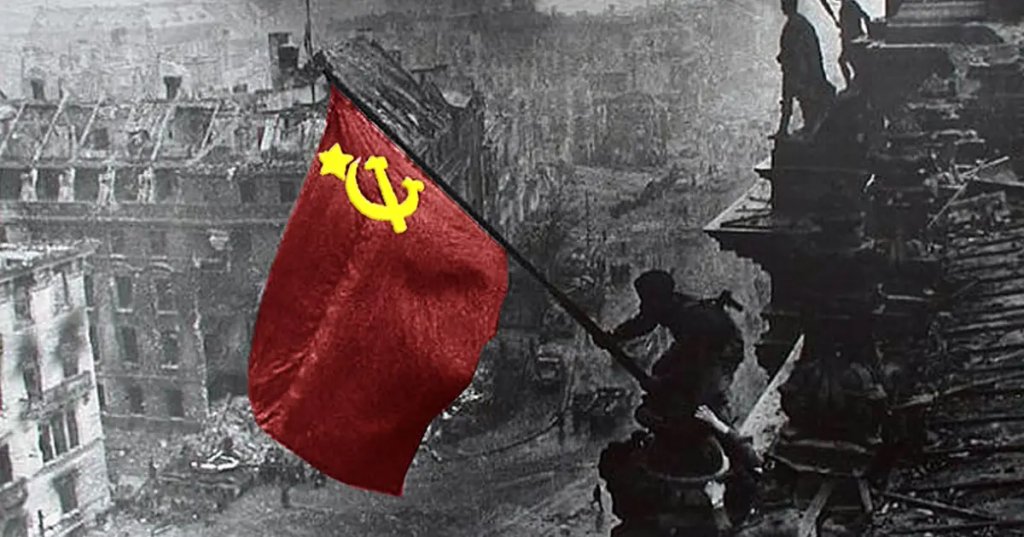It was the Red Army’s “Iwo Jima” moment, Soviet troops fixing the flag of the Soviet Union on top of the most infamous symbol of Hitler’s rise to power. On May 2, 1945, Soviet photographer Yevgeny Khaldei snapped the now-famous photo of Alyosha Kovalyov and Abdulkhakim Ismailov raising the hammer and sickle over the Reichstag.

But the truth behind the photo, who was in the photo, and who actually raised the Soviet victory banner, was clouded in the fog of war and muddled by the Russian propaganda machine for decades. The first to raise the flag were a Kazakh, Lt. Rakhimzhan Koshkarbaev and Pvt. Georgij Bulatov, a Russian from Sverdlovsk.

At first, the Kremlin announced that Georgia-born Meliton Kantaria and Russian Mikhail Yegorov were the men in the photo. The men were hailed as heroes and lived the rest of their lives in the glory created by Soviet propaganda.
Only after the fall of the Soviet Union in 1991 did the truth come out. Kovalyov and Ismailov were really the ones who hoisted the flag on the building… in the photo. But they weren’t the first to raise one. One story has it that a Sergeant Mikhail Menin, part of a five-man fire team led by Vladimir Makov raised a flag on the building first.
In 2007, the Russian Institute of Military History announced that honor went to Koshkarbaev and Bulatov. The only problem was they hoisted the red banner at 10:30 at night. No one believed these two, however – it was too dark for photos.
A documentary film titled “The Motherland Calls” about Kazakhs in the Great Patriotic War (the Soviet term for WWII), relayed anecdotal evidence from other Red Army veterans that described Koshkarbaev and other men from the 674th regiment moving on the parliament building – including the Soviet filmmaker and combat cameraman Roman Karmen.

Karmen recalled filming “the Kazakh officer” as a Red Army combat cameraman in Berlin.
“You see, we received an order from Moscow: the Victory Banner over the Reichstag should be hoisted by representatives of Georgia and Russia, but it was difficult to stop. I was told to cut the frames [of Koshkarbaev], but they are preserved, in the archives.”
Kovalyov and Ismailov were pressured by the the KGB to stay quiet about their role in the flag raising. Bulatov was found hanged in his apartment in 1955.
Soviet leadership began pressuring their troops to capture the building in preparation for the International Workers Day celebrations for May 1st. The Soviets tried to drape red banners on the building via aircraft, but came up short when the banners were caught on the girders of the roof.
But as of May 30th, Hitler still controlled the Reichstag.
The German parliament building, Hitler’s rubber stamp, was defended by 1,000 German troops, so Soviet leadership ordered nine divisions to attack the building. Red Army troops used mortars fired horizontally to punch through bricked-up doorway throughout the building. They fought room by room until Soviet fire teams could make their way to the stairs and the roof of the building.

By May 2nd, the only Germans left in the building surrendered from the basement. That’s when the photographer Yevgeny Khaldei made his way up to the roof and enlisted Kovalyov and Ismailov to help raise the now-famous red banner. He burned through a whole roll of film taking the image.
The last surviving Red Army veteran who stormed the Reichstag died in 2015.


